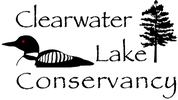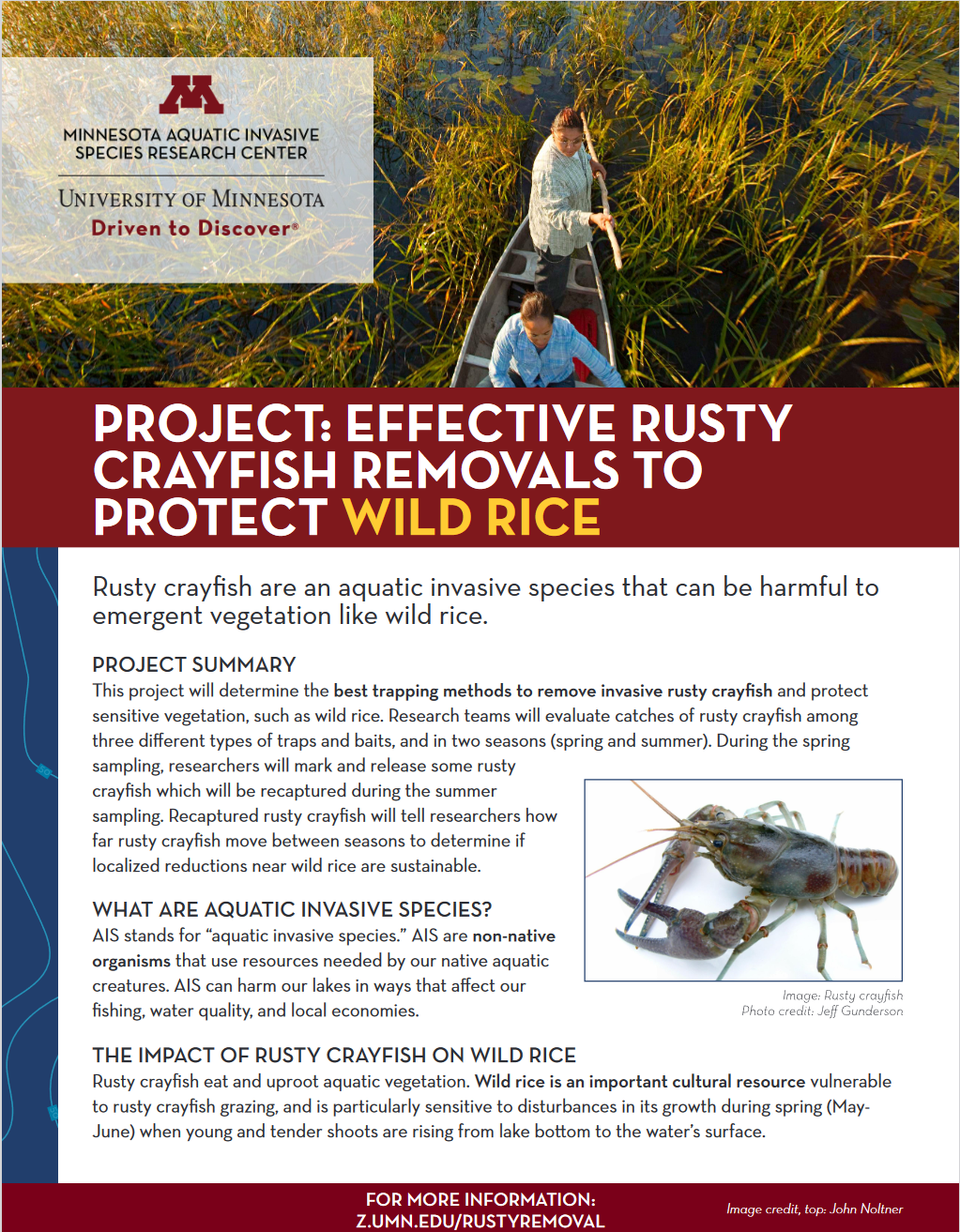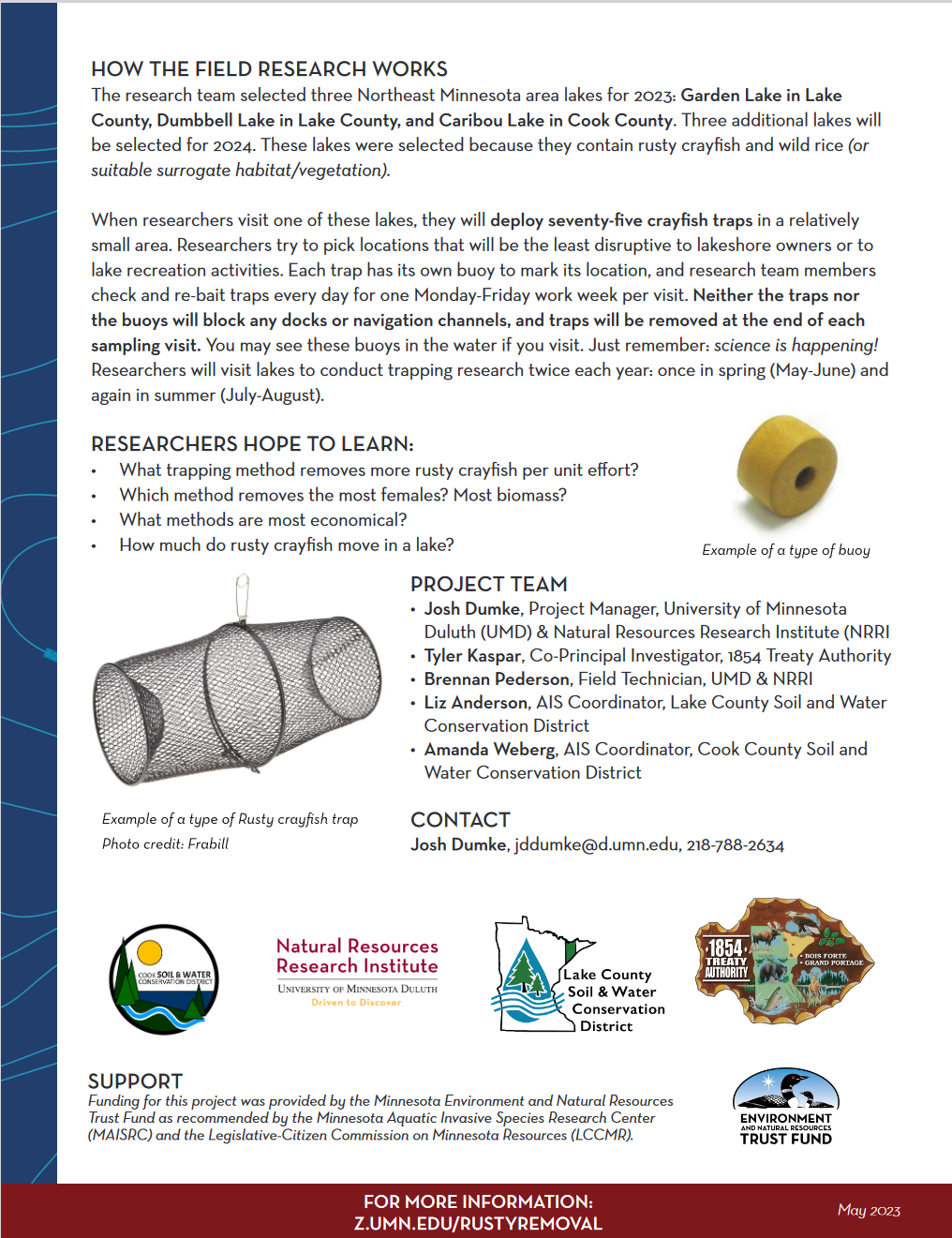|
Image from 2021 University of MN AIS Detectors Guide
|
What are Rusty Crayfish
Rusty crayfish are crustaceans that grow up to 5 inches long. They are native to the Ohio River basin. Rusty crayfish have spread to several states and Ontario. They were discovered in Minnesota around 1960 and are confirmed in about 50 Minnesota waters, mostly in central and northern counties. They are often used as bait and it is suspected that they spread through dumping of bait buckets.
Rusty crayfish are aggressive invaders that often displace native crayfish. They are an opportunistic feeder, which means they eat almost anything, including plants and small fish. They can harm native fish communities by feeding on their eggs and young, drive out or hybridize with native crayfish, and eliminate aquatic vegetation. They also have a higher metabolism and grow larger then native crayfish. This combination results in a larger appetite then the native crayfish. How to Identify it
Rusty crayfish have dark rusty-colored spots on each side of their back, about where you would grab them to pick them up. Their claws are smooth and vary in color from grayish-green to reddish brown. The tips of their claws also have black bands. Rusty Crayfish are significantly larger then the native form of crayfish in Clearwater lake.
|
What Can I do
The best way to control rusty crayfish is to slow the spread of them to other lakes.
- It is illegal in MN to use crayfish as bait.
- Never transport them from one body of water to another.
- Learn how to identify the rusty crayfish
- Have a Crayfish boil! They are good to eat and you are helping the lake too! You can catch them by hand, with a net or in a trap!
Crayfish Study
University of MN is doing research on Rusty Crayfish. Here is an overview of the project.
This research project will examine three lakes in 2023 and three different lakes in 2024. Goal 1 (trap and bait testing) will occur over three nights in May/June and again in July/August in each lake. For Goal 2, we will mark crayfish during our May/June sampling and recapture marked individuals during our July/August visit.
Our findings will provide stakeholders (lake associations, community groups, soil and water conservation districts, and Native American bands) guidance on effective rusty crayfish control using trap and bait choices legal in Minnesota. Our findings on rusty crayfish movement rates will inform stakeholders how long trapping efforts near sensitive vegetation may be protective.
Our findings will provide stakeholders (lake associations, community groups, soil and water conservation districts, and Native American bands) guidance on effective rusty crayfish control using trap and bait choices legal in Minnesota. Our findings on rusty crayfish movement rates will inform stakeholders how long trapping efforts near sensitive vegetation may be protective.
Consider a donation to the Invasive species fund, to treat our lake.





